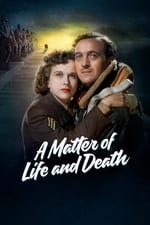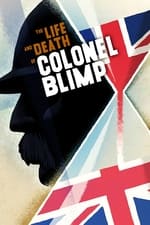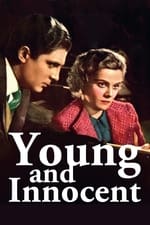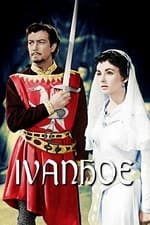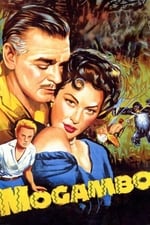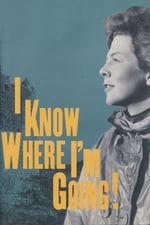Persoonlijke gegevens
Bekend van Kunst
Bekende vermeldingen 66
Geslacht Man
Verjaardag 29 januari 1886
Overlijdensdag 16 juli 1964 (78 jaar oud)
Geboorteplaats Görlitz, Silesia [now Saxony], Germany
Ook bekend als
- A. Junge
- A. Jungle
Inhoudsscore
63
We zijn zo dichtbij, en tóch zo ver weg.
Log in om een fout te melden
Biografie
From Wikipedia, the free encyclopedia
Alfred Junge (29 January 1886, Görlitz, Silesia (now Saxony), Germany – 16 July 1964, London) was a German-born production designer who spent a large part of his career working in the British film industry.
Junge had wanted to be an artist from childhood. Dabbling in theatre in his teenage years, he joined the Görlitz Stadttheater at eighteen and was involved in all areas of production. He worked in the theatre for over fifteen years. Junge began his career in film at Berlin's UFA studios, working there as an art director from 1920 until 1926, when he joined the production team of director E.A. Dupont who was relocating to British International Pictures. He remained with BIP at Elstree Studios until 1930 when he returned briefly to the continent to work in Germany and then in France with Marcel Pagnol. From 1932 he remained in Britain.
Michael Balcon placed him in charge of the new Gaumont British art department where his organisational skills as well as talent came into their own, running a large staff of art directors and craftsmen who worked on any number of films at one time. After beimg Gaumont Britain's first real supervising art director, he moved to MGM-British where he continued until the outbreak of the Second World War. After a brief spell spent interned as an enemy alien on the Isle of Man, Junge returned to London where he began work on King Vidor's The Citadel (1938). In 1939, he worked with Powell and Pressburger on Contraband, the first of eight pictures he made with the partnership.
The last of these was Black Narcissus (1947); his designs for the Himalayas-set film earned Junge the Academy Award for Best Art Direction. He received a second nomination for the Arthurian epic Knights of the Round Table (1954). He was the first film production designer to have one of his pictures hung in the Royal Academy in London. This was a sketch of The Road to Estaminet du Pont which he created in preparation for his work on The Life and Death of Colonel Blimp (1943).
From Wikipedia, the free encyclopedia
Alfred Junge (29 January 1886, Görlitz, Silesia (now Saxony), Germany – 16 July 1964, London) was a German-born production designer who spent a large part of his career working in the British film industry.
Junge had wanted to be an artist from childhood. Dabbling in theatre in his teenage years, he joined the Görlitz Stadttheater at eighteen and was involved in all areas of production. He worked in the theatre for over fifteen years. Junge began his career in film at Berlin's UFA studios, working there as an art director from 1920 until 1926, when he joined the production team of director E.A. Dupont who was relocating to British International Pictures. He remained with BIP at Elstree Studios until 1930 when he returned briefly to the continent to work in Germany and then in France with Marcel Pagnol. From 1932 he remained in Britain.
Michael Balcon placed him in charge of the new Gaumont British art department where his organisational skills as well as talent came into their own, running a large staff of art directors and craftsmen who worked on any number of films at one time. After beimg Gaumont Britain's first real supervising art director, he moved to MGM-British where he continued until the outbreak of the Second World War. After a brief spell spent interned as an enemy alien on the Isle of Man, Junge returned to London where he began work on King Vidor's The Citadel (1938). In 1939, he worked with Powell and Pressburger on Contraband, the first of eight pictures he made with the partnership.
The last of these was Black Narcissus (1947); his designs for the Himalayas-set film earned Junge the Academy Award for Best Art Direction. He received a second nomination for the Arthurian epic Knights of the Round Table (1954). He was the first film production designer to have one of his pictures hung in the Royal Academy in London. This was a sketch of The Road to Estaminet du Pont which he created in preparation for his work on The Life and Death of Colonel Blimp (1943).
Kunst
|
|||||||||||||||||||||||||||||||||
|
|||||||||||||||||||||||||||||||||
|
|||||||||||||||||||||||||||||||||
|
|||||||||||||||||||||||||||||||||
|
|||||||||||||||||||||||||||||||||
|
|||||||||||||||||||||||||||||||||
|
|||||||||||||||||||||||||||||||||
|
|||||||||||||||||||||||||||||||||
|
|||||||||||||||||||||||||||||||||
|
|||||||||||||||||||||||||||||||||
|
|||||||||||||||||||||||||||||||||
|
|||||||||||||||||||||||||||||||||
|
|||||||||||||||||||||||||||||||||
|
|||||||||||||||||||||||||||||||||
|
|||||||||||||||||||||||||||||||||
|
|||||||||||||||||||||||||||||||||
|
|||||||||||||||||||||||||||||||||
|
|||||||||||||||||||||||||||||||||
|
|||||||||||||||||||||||||||||||||
|
|||||||||||||||||||||||||||||||||
|
|||||||||||||||||||||||||||||||||
|
|||||||||||||||||||||||||||||||||
|
|||||||||||||||||||||||||||||||||
|
|||||||||||||||||||||||||||||||||
|
|||||||||||||||||||||||||||||||||
|
|||||||||||||||||||||||||||||||||
|
|||||||||||||||||||||||||||||||||
|
|||||||||||||||||||||||||||||||||
|

